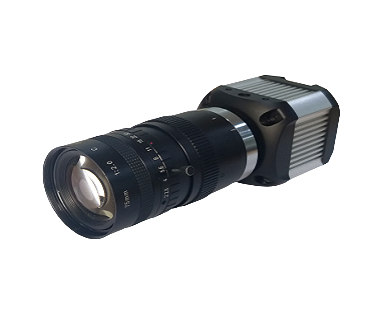
Thermal imaging cameras are becoming increasingly popular for their ability to detect heat energy sources that can’t be seen with the naked eye. Whether you’re a security professional, a hunter, or just curious about the technology, here’s what you need to know about how thermal imaging works and why it’s so helpful.
Introduction to Thermal Imaging Cameras
Thermal cameras are a type of infrared camera that can detect the heat emitted by an object or scene and translate it into an image. These images are called thermograms and can reveal a great deal about the temperature distribution of an object or scene.
Thermal imaging cameras have a wide range of applications, from detecting electrical faults in equipment to monitoring the health of crops and animals. They can also be used for security purposes, as they can see the heat signature of a human body even in complete darkness.
Thermal imaging cameras detect infrared radiation emitted by an object or scene and translate it into an electrical signal. This signal is then converted into an image displayed on a screen or monitor.
The intensity of the infrared radiation emitted by an object or scene depends on its temperature. Hotter objects emit more radiation than cooler objects, so thermal images can be used to identify areas of high or low temperature.
Thermal images are often combined with other images, such as visible light images, to provide more information about an object or scene. For example, firefighters may use thermal imaging cameras to help them locate people trapped in burning buildings.
How Thermal Imaging Cameras Work
Thermal imaging cameras are a type of infrared camera that can detect slight temperature differences across an object’s surface. By seeing these tiny temperature changes, thermal cameras can create an image of an object’s heat signature.
To understand how this works, it helps first to understand how regular cameras work. Regular cameras take pictures by converting the light that reflects off an object into electrical signals. These electrical indicators are then converted into digital form and stored as pictures.
Thermal imaging cameras work similarly, except they are sensitive to infrared radiation instead of visible light. Infrared radiation is electromagnetic radiation that is emitted by all objects based on their temperature. The hotter an object is, the more infrared radiation it emits.
So, when you point a thermal camera at an object, it will detect the different levels of infrared radiation emitted from different parts of the object’s surface. These different levels are then converted into digital forms and stored as images. This image is called a thermogram and visually represents the object’s heat signature.
Benefits of Using Thermal Imaging Cameras
Thermal imaging cameras are becoming increasingly popular in many applications due to their numerous benefits. These benefits include:
Improved safety
Thermal cameras can detect temperature differences and hot spots that may indicate potential safety hazards, such as electrical issues or fires. This allows for proactive measures to be taken before a situation becomes critical, ensuring the safety of workers, equipment, and facilities.
Predictive maintenance
By detecting temperature anomalies in machinery, thermal cameras can help to predict equipment failures and prevent unscheduled downtime. This helps to reduce the cost of maintenance and repairs, as well as minimize the risk of lost productivity and revenue.
Energy efficiency
Thermal cameras can help identify areas where energy is wasted, such as air leaks, insulation defects, and overheating equipment. By addressing these issues, organizations can reduce their energy consumption, lower their carbon footprint, and save money on energy costs.
Improved inspection and surveillance
Thermal cameras can see through smoke, fog, and darkness, making them useful for inspecting and surveying in challenging conditions. This can be particularly beneficial in applications such as security and surveillance, search and rescue, and firefighting.
Increased productivity
By providing real-time temperature data, thermal cameras can help to increase efficiency and productivity in various industries. This can be particularly beneficial in manufacturing and production, where temperature control is critical to quality and productivity.
Non-contact measurement
Thermal cameras provide non-contact temperature measurements, avoiding the need to touch hot or hazardous objects physically. This non-contact temperature measurement device reduces the risk of injury to workers and eliminates the need for protective gear, resulting in increased safety and efficiency.
Types of Thermal Imaging Cameras
There are several types of thermal imaging cameras, including:
Handheld thermal cameras
These portable, easy-to-use devices that can be carried around for quick inspections. They are often used in various applications, such as building inspections, electrical inspections, and HVAC maintenance.
Fixed thermal cameras
These are mounted cameras typically used for surveillance, security, and process control applications. They can be mounted on walls, poles, or other structures. They can be integrated into a larger system for remote monitoring and data analysis.
Drone-mounted thermal cameras
These are thermal cameras attached to drones and used for aerial inspections and surveying. They are ideal for inspecting large structures, such as buildings, bridges, and power lines, or monitoring crops, wildlife, and other areas that are difficult to access on foot.
Medical thermal cameras
These are specialized thermal cameras used for medical imaging, such as detecting fever in patients or monitoring wound healing.
Automotive thermal cameras
These are specialized thermal cameras that are used for automotive applications, such as for detecting hot spots in engines, transmissions, and other vehicle components.
Each thermal camera type has unique features and capabilities, and the best choice will depend on the specific application and requirements.
Applications and Uses of Thermal Imaging Cameras
Thermal imaging cameras have a wide range of applications in different industries. They can be used for monitoring and inspection, process control, and quality assurance.
Thermal imaging cameras can detect hot spots in electrical equipment, monitor the health of industrial machinery, or identify energy leaks in buildings. In the medical field, thermal imaging cameras detect early signs of skin cancer.
Thermal imaging cameras can also be used for security purposes. They can detect intruders in a building or monitor a perimeter fence for any breaches.
Safety Considerations with Thermal Imaging Cameras
While thermal imaging cameras are safe to use in most situations, there are some safety considerations to keep in mind, including:
Eye safety
Some thermal imaging cameras emit infrared radiation, which can harm the eyes if viewed directly. It is important to follow the manufacturer’s guidelines for eye protection when using these cameras.
Electrical safety
When using thermal imaging cameras to inspect electrical equipment, it is important to follow proper electrical safety procedures, such as de-energizing the equipment before inspection and wearing appropriate protective gear.
Temperature limits
Thermal imaging cameras have temperatures beyond which the camera may become damaged. It is important to follow the manufacturer’s guidelines for safe temperature ranges to avoid damaging the camera.
Radiation safety
Some thermal imaging cameras use radioactive materials, such as isotopes, as a source of energy. It is important to follow the manufacturer’s guidelines for safe handling and disposal of these cameras to avoid potential radiation exposure.
Data privacy
When using thermal imaging cameras for surveillance or monitoring, it is important to consider the privacy implications and to comply with relevant privacy laws and regulations.
By following these safety considerations, organizations can ensure that thermal imaging cameras are safe, effective, and compliant with relevant regulations.
Conclusion
Thermal imaging cameras can be incredibly helpful tools in a variety of industries. Therm imaging cameras are invaluable if you need to identify energy leaks, locate individuals or animals, or even detect hazards and dangerous materials in the dark. With the right training and knowledge of how they work, you can utilize these devices to their fullest potential. As technology advances, so will the capabilities of thermal imaging cameras, making them even more useful than ever!





